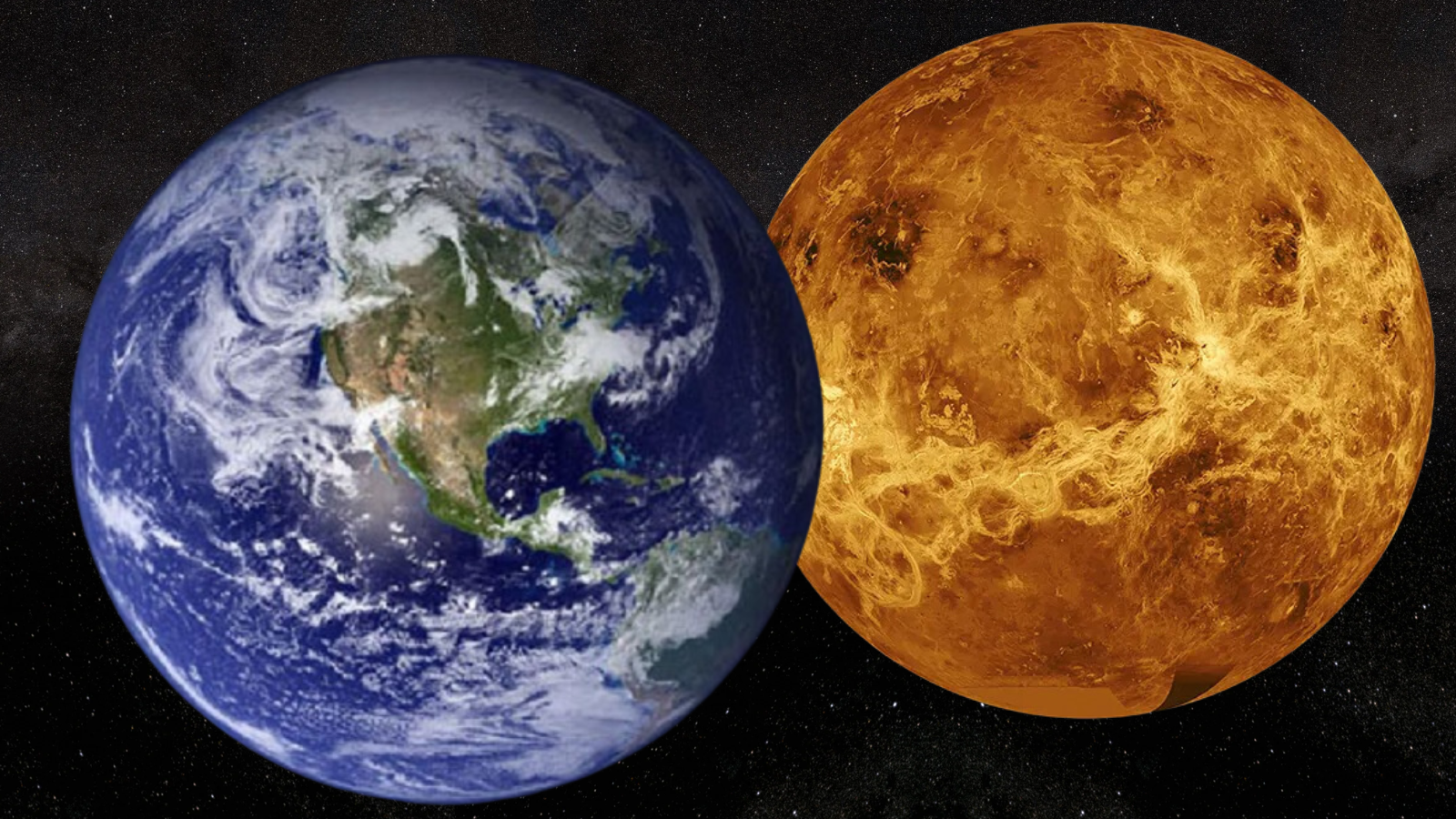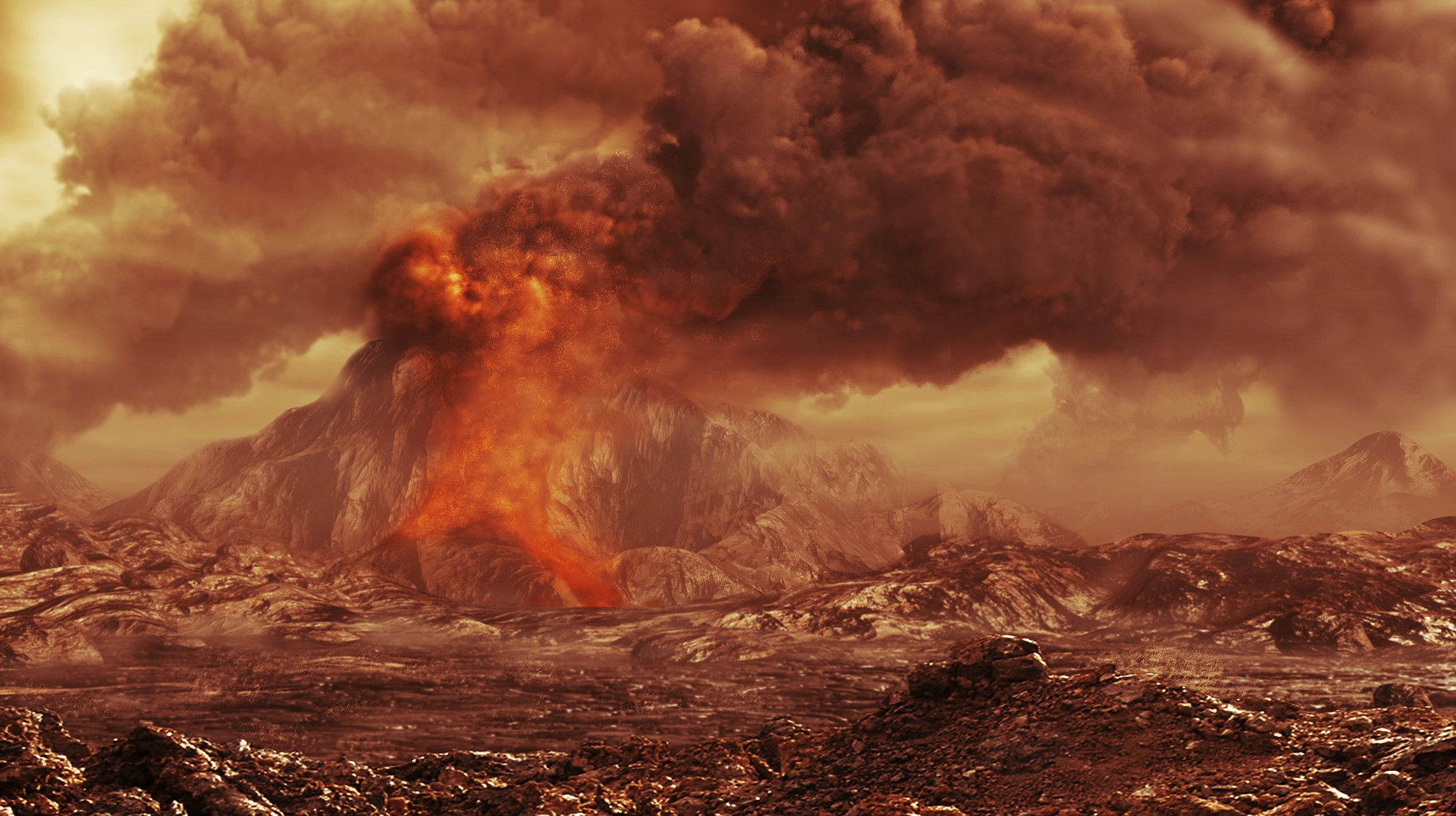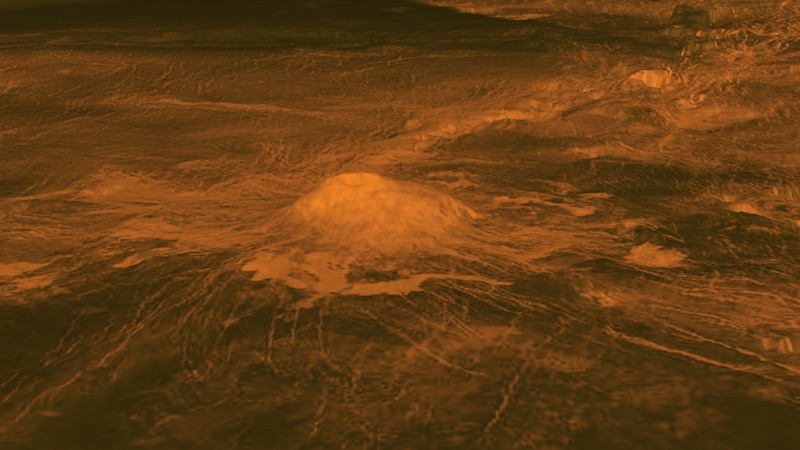
New research may have brought Earth and its inhospitable, "evil twin" even closer together.
Today, Venus seems to lack the tectonic activity seen on Earth, but surface features like faults, folds and volcanoes indicate the hellish planet — with intense temperatures hot enough to melt lead and fearsome surface pressures — was once tectonically active.
New research reveals striking plateaus known as "tesserae" found on the Venusian surface, suggesting that, billions of years ago, intense tectonic activity similar to that which created Earth's earliest continents may have taken place on Venus.
"We did not expect Venus, with its scorching 860 degrees Fahrenheit (460 degrees Celsius) surface temperature and lack of plate tectonics, to possess such complex geological features," research leader Fabio Capitanio from the Monash University School of Earth, Atmosphere and Environment said in a statement. "The study [done in collaboration with NASA] challenges our understanding of how planets evolve."
Related: Venus may be able to support life, new atmospheric evidence suggests
What's shaking on Venus?
Plate tectonics refers to the theory that the rigid outer layer of a rocky planet's crust, called the lithosphere, is made up of a number of large plates that move around, over, away from, under and against one another. In the process, these actions help to shape a planet. So far, active plate tectonics have only been observed on Earth.
Venus, with its stagnant lithosphere, or "stagnant lid," only has a single plate with minimal movement. However, its tectonic past remains heavily debated. Many scientists speculate that Venus may have transitioned from limited tectonic movement early in its history to the stagnant lid model that exists today.
To investigate this, Capitanio's team was drawn to formations on Venus called the Ishtar Terra highlands — which are unusual formations given the current lack of plate activity.
The [Ishtar Terra highlands] consist of an Australia-sized crustal plateau with an average elevation of around 2.5 miles (4 kilometers) that is comparable to that of the Tibetan Plateau, surrounded by elongated mountain belts with elevations of around 6.2 miles (10 km), taller than the Himalayas," the team wrote in a paper discussing the findings published in the journal Nature Geoscience. "The region is floored by a thick crust that is comparable to that of cratons on Earth."
On Earth, these formations result from tectonic plates butting up against one another. But on Venus, how could they have formed within a quiescent surface?
The team speculated that these formations might provide further evidence that Earth and Venus share similar geological pasts — and could hold the key to understanding the geological evolution of rocky planets.

To investigate potential geological mechanisms that led to the formation of the Ishtar Terra highlands, the scientists used computer modeling coupled with data gathered by the Magellan spacecraft.
In 1990, NASA's Magellan mission became the first spacecraft to image the entire surface of Venus. This allowed scientists to determine the thermal, chemical and mechanical evolution of the planet's mantle and lithosphere and develop scenarios that would have led to the formation of the Ishtar Terra highlands.

The team then compared the model's results to Earth's mantle processes using established scientific methods. And, perhaps most importantly, the researchers tested the different strengths of the lithosphere that would reflect Venus' higher surface temperatures.
This approach allowed them to compare mantle dynamics and lithosphere behavior, integrating previous models focused on either tectonic features or planetary regimes, ranging from mobile (as on Earth) to stagnant (as on Venus) surface states.
The results showed how the plateaus could plausibly form through a process where the planet's surface thins and melts due to its low strength, causing elevated areas as molten rock rises. Over time, the stretching slows down as the mantle becomes more resistant, leading to cooling and the formation of high plains surrounded by folded belts.
This mechanism aligns with the formation of the ancient cores of tectonic plates, known as "cratons" on the hot early Earth, which took place before the onset of plate tectonics.
"This finding provides a fascinating new perspective on Venus and its potential links to early Earth," Capitanio said. "The features we found on Venus are strikingly similar to Earth's early continents, suggesting that the dynamics of Venus' past may have been more similar to Earth's than previously thought."
The researcher hopes that by studying similar features on Venus, it will be possible to unlock the secrets of Earth's early history.
"Our research has paved the way for future missions to Venus, such as DAVINCI, VERITAS, and EnVision," Capitanio concluded. "These missions will provide further insights into Venus' geological history and its connection to Earth."







